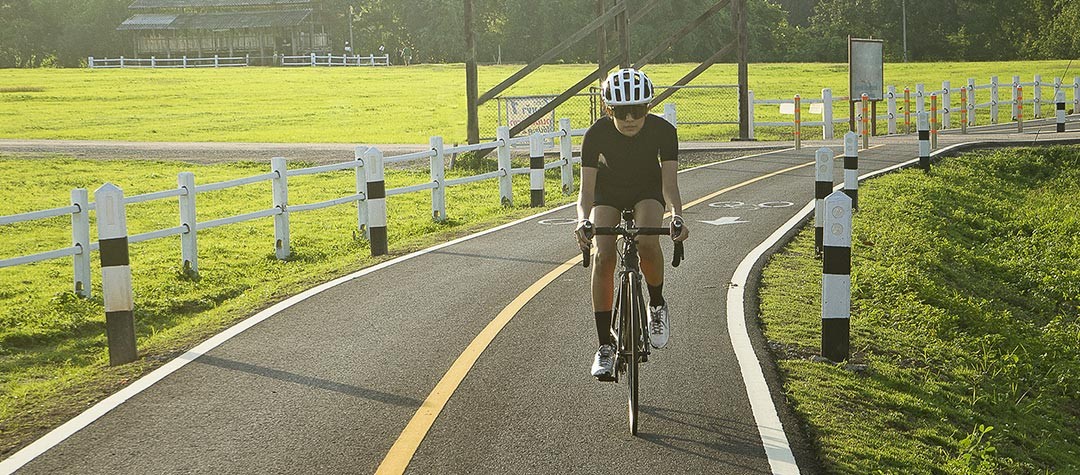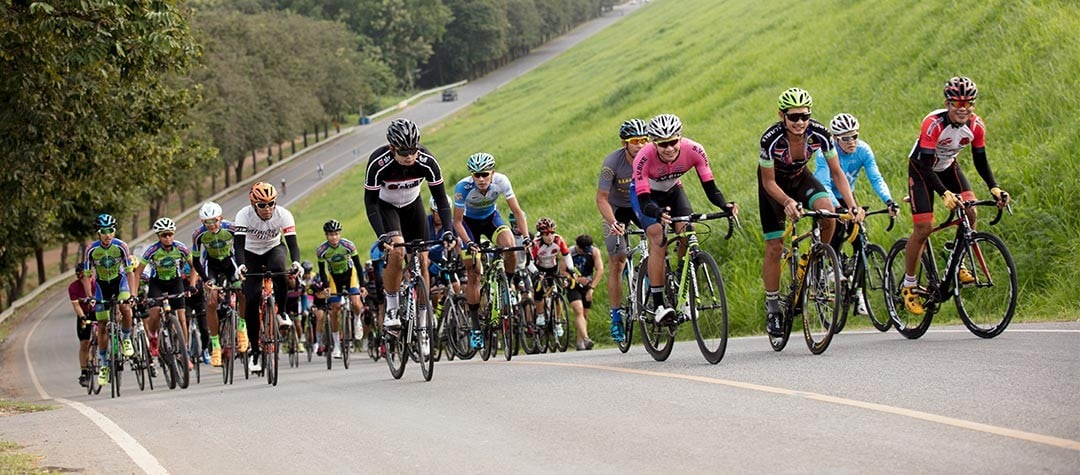The time trial or ‘the race of truth’ pits the rider against the clock. It’s a very simple concept; the fastest rider over a set distance wins.
To excel at the time trial discipline you must be able to maintain a high level of power for a relatively long period of time. This takes fitness, stamina and mental toughness because time trialling hurts - a lot. If you don’t feel pain during a time trial, I’m afraid you aren’t trying hard enough!
Time Trial specialists have the ability to ride at their ‘limit’, and by that I mean at a pace that they can just about sustain over the given distance. Go much faster and you go onto oxygen debt. Go any slower and, well, you’re just not working hard enough. It’s a very fine balance, requiring a lot of mental skill, as you need to be able to concentrate whilst at the same time feeling in a great deal of discomfort.
To be a time-trialist you don’t have to be Bradley Wiggins winning the Olympics. Anyone can do it. In fact, time trials are a good way of generally improving your strength, as the effort is so intense. I used to ride a 10 mile Time Trial once a week when I started racing and it formed an important part of my training.
Time trials are great for setting personal objectives because as you improve and get fitter, your times will improve.
Time trials are great for setting personal objectives because as you improve and get fitter, your times will improve. You’ll be able to see tangible results which will only spur you on and motivate you to try and beat yourself and your personal best.
Here are a few tips on how to train for a time trial.
The Courses
Time trials (in the UK at least) tend to be over set distances of 10, 25, 50 and 100 miles over recognised courses which are predominantly flat. There are other time trials over more sporting, hillier types of courses that, as a general rule, are around 20-25 miles in length or 40km.
The shorter the distance, the more intense the effort as a higher power output is easier (by that I don’t mean less painful!) to sustain over a shorter distance. The longer the distance, the more measured your effort will have to be. As a guide for a beginner I’d start off with a 10 mile time trial working towards a 25.
The importance of aerodynamics
Put simply, the less air you have to push through the faster you will go. It won’t mean you’ll feel less pain, but the pain will be far more cost efficient. You need to make your frontal area as low and narrow as possible so you can cut through the air more efficiently.
Aero frames, clothing and helmets all add up to improved efficiency.
However this can’t be at the cost of comfort and power. Again it’s a balance. Mind you, it’s not just about position. Aero frames, clothing and helmets all add up to improved efficiency.
Your bike
You don’t necessarily need a specialist Time Trial bike when first starting out, as these are very expensive but do offer far superior aerodynamics as well as placing the rider in a more efficient aero position. They are worth investing in if you intend to time trial regularly.
The next best thing to getting a TT bike is to purchase some clip on ‘tri bars’ or ‘TT bars’ to get you into that aero position. These aren’t overly pricey and do make a big difference as they really narrow your frontal area whilst offering a degree of comfort.
Adjusting your position
A word of warning here; don’t rush this. Your TT position will differ greatly to your normal road position. Any adjustments should be done using small increments over time. When you are resting on the TT bars your body is thrown forward somewhat so you may need to push your saddle forward a little on the rails so you aren’t sat uncomfortably on the tip of the saddle.
You may also wish to lower your handlebar position slightly by taking out a riser underneath the stem. Just remember to record the changes so you can revert the bike back to your ‘normal’ road position once your TT training is done. If riding on the road in your new position take out a multi tool with you so you can stop and adjust until you are comfortable.
Time Trial training
Practice on your road bike with TT bars doing three hard efforts of 10 minutes on a flat, quiet piece of road (if you can find one) following a warm up of around 10 minutes. These efforts should make you breathe very hard but in a controlled, rhythmic way. The perceived effort should be about 8 on a scale of 10.
Use your cycle computer to time the efforts and also keep an eye on your speed (but primarily the road ahead). From a position riding on the brake hoods, place your hands on the TT bars, in turn dropping your head and shoulders into a lower position, all the time maintaining your effort. Try and keep the same effort and position for the duration of the session whilst ensuring you aren’t straining your lower back.
(Using a heart rate monitor will also assist greatly, especially if you have worked out your respective heart-rate zones.)
This training session need only last an hour or so, broken down as follows;
- 10 min warm up
- 10 min effort in TT position
- 5 min recovery ride, low gear, spinning legs, low intensity
- 2 x 10 min further efforts with 5 min recovery in between
- 10 min warm down.
Try this session a couple of times a week if you can, around your other riding. It will improve your ability to ride hard in an aero position and you can check your efficiency by looking at your speed as you change position. The more aero you get the faster you will go for the same effort. This way you will soon find a position that you are both comfortable and efficient in.
Be aware that riding on TT bars does lessen your ability to control the bike quite as efficiently because you are further away from the brakes. Therefore always look ahead, never down.
Further training
As you become more comfortable in your new position you should be able to ride for longer and harder. As your TT approaches, gradually work up to an effort that matches the distance you will be riding, or at the very least approaching it.
The humble turbo trainer offers a great alternative to TT training on the road as it is in a completely controlled environment. You can do the same session described earlier without the distraction of traffic or other hazards. Just make sure you use a space that is very well ventilated. The turbo is ideal for completing the whole distance, just be aware that timings may be out a little due to resistance differences so bear this in mind.
The more TT efforts you do the more efficient you will become. You’ll also begin to understand just how far you can push yourself, which is the true art of the time-trialist. Good luck out there.
Picture credit: Radu Razvan / Shutterstock.com















